| Jul 08 |
Archive for the 'Heroines and heroes' CategoryWhat Lari Wrote Next…I have a bit of a traffic jam of books waiting to be published over this summer and autumn. Girls, Goddesses and Giants: Tales of Heroines from Around the World (A&C Black, July 2013)
Masha and the Bear is about a little girl who gets lost in the forest, then gets trapped by a bear in a cave. But she doesn’t need a woodcutter or hunter to save her, she gets home all on her own using brains and baking skills! The Hungry Wolf is about a wolf who wants to eat a little lamb, and about all the ways the tricky little lamb fools the wolf and saves herself. It’s a combination of many of my favourite trickster tales, and was great fun to write! Breaking The Spell: Stories of Magic and Mystery from Scotland (Frances Lincoln, September 2013) The Magic Word (Picture Kelpies, September 2013) Winter Tales: Winter Stories from Around the World (A&C Black, October 2013) And next year? Floris Books are bringing out the first three novels in their new young adult list, TeenKelpies, and I’m delighted to say that my next novel will be one of them! |
| Mar 18 |
Archive for the 'Heroines and heroes' CategoryChoosing your favourite characters and making centaurs’ rear endsI’ve met lots of kids dressed up as their favourite book characters in the last couple of weeks, for World Book Day and for Comic Relief. And one of the questions I’m asked most often during school visits is: who’s my favourite character in the books I write? How do you choose your favourite characters? Does having a favourite character in one book make you want to read more about them in another book? (Is that why series are so popular?) And when you’re writing a story, are you ever surprised at which character you end up liking the best? |
| Aug 22 |
Archive for the 'Heroines and heroes' CategoryWho is your favourite Fabled Beast?At the Edinburgh Book Festival earlier this week, I was sitting at a signing table looking at a long line of First Aid For Fairies fans (I knew they were fans, because most of them were cuddling a stack of slightly dog-eared books) and I had to think of something personal, interesting and appropriate to write in each book. |
| Feb 16 |
Archive for the 'Heroines and heroes' CategoryDrawing A Veil – Writing Right Outside Your Comfort ZoneMy new novella, Drawing a Veil, is about a girl who decides to wear a headscarf to school, and her friends’ and classmates’ reaction to that decision. I’m fascinated by the idea of choice, and how we deal with the awkward fact that if we support people’s right to make free choices, then we also have to support them when they make a choice we may not agree with. Writing this book did make me feel uncomfortable at times, and I know it made a few of my feminist friends uncomfortable too. So is it a good idea to write about something which makes you feel uncomfortable or challenges the comfy assumptions you don’t question often enough? If I only wrote about decisions which I agreed with, if I only wrote stories which I felt happy and warm and cosy writing, then I probably wouldn’t write anything worth reading. (A lot of Helen’s risk-taking in the First Aid series, for example, makes me VERY nervous as a mum!) So, even though I’m an atheist, who would never cover any bit of me up to please a god I don’t believe in, I realised that if I want the right NOT to wear a headscarf, then I also have to stand up for other people’s right to wear headscarves if that’s what they want. (And of course, any girl’s, or any woman’s, right not to cover up if she doesn’t want to.) Also I think there’s an assumption that all girls in veils or scarves are shy, unsure of themselves, hiding themselves. But when I talk to kids in schools about imagination and creativity, I see absolutely no difference in their levels of confidence or self esteem, whatever the girls are wearing on their heads. So I really wanted to write about a girl in a headscarf who stands up for herself, who takes part in an argument, a fight and a chase (because action is what I enjoy writing!) This isn’t the first time I’ve written about subjects which make me uncomfortable or make me question my own assumptions. In both Wolf Notes and Rocking Horse War, I’ve written about hunting and hunters, even though I’ve been a strict vegetarian since I was 14. So writing about wolves hunting deer, or girls tracking deer (poor deer are victims in a few of my books!) made me question my own reasons for being vegetarian. When I was researching wolves and how hunting led to their social networks and their intelligence, I seriously considered becoming an omnivore again, because that’s what humans evolved to be. But after reflection, I decided my reasons for being vegetarian were more than just a long lasting fit of teenage pique, so I am still a proud veggie. But the point is that I write about characters who believe very different things from me, and I allow those characters and their stories to make me examine my own beliefs. I think that’s a very good thing. For the characters, for the stories and for me. And how did spending time with Amina in Drawing a Veil change my comfy assumptions? Writing about this confident girl and her decisions made me realise that a freely taken decision to wear a headscarf can be a positive assertion of identity, rather than a passive adherence to family or religious pressure. So – what beliefs or assumptions of yours could do with being taken out and examined by stories, characters and tough questions? |
| Jan 23 |
Archive for the 'Heroines and heroes' CategoryHappy Year of the Dragon!The start of the Year of the Dragon has made me think about dragons. Though I don’t really need to be encouraged to think about dragons – the book I’m deep in the middle of editing has seven speaking dragon parts, and any number of minor spear-carrying dragons. But this seems like a good time to celebrate other people’s dragons too! My favourite dragon books include: The wonderful heartrending dragon in CS Lewis’s The Voyage of the Dawn Treader, which is my earliest dragon memory. The amazing How to Train Your Dragon series by Cressida Cowell, the funniest, cleverest, most exciting series of dragon books ever. Though I’m not sure I’d want Toothless under my helmet. Philip Reeves’ No Such Thing As Dragons, which is dark, spiky, tantalisingly short, and a fabulous novel for slightly older readers. And the very similarly titled, but for much smaller people: There’s No Such Thing As A Dragon by Jack Kent. I also love the splendidly distant dragons in Vivien French’s Flight of Dragons. I have mixed feelings about Eragon and its sequels, partly because they are almost too big to hold, but also because I thought I’d been really original, creating a friendly female dragon, making her blue and calling her Sapphire. Then shortly after First Aid for Fairies was published, I read Eragon, and met his friendly blue female dragon, called Saphira. I’m very relieved about that final vowel. I have a couple of favourite dragon reference books too (I’m not sure if you can call them non-fiction!) My first dragon collection was A Book of Dragons, edited by Roger Lancelyn Green (though I see it has my wee brother’s name on the first page, in pencil. Perhaps I could rub that out, because he’s not getting it back now!) And more recently, I’ve loved the wonderful tactile Dragonology books by Dr Ernest Drake (which aren’t mine either – they belong to my kids.) And finally, my favourite dragon myths. I’ve enjoyed telling dragon myths for years, partly because they come with inbuilt excitement (a dragon! fire! teeth!), partly because they come from all over the world, and partly because it feels right to share dragon stories when I’m doing author sessions about the novels with Sapphire in them. My favourite dragon stories to share include: A seven-headed Chinese dragon A Greek dragon who kept a shepherd boy company on the hills A Viking dragon defeated by a sheepskin A Polish dragon, also defeated by a sheepskin (some dragons are easily fooled) A Persian dragon who teased a horse A Georgian dragon who was sung to sleep And an Irish dragon who lost his tongue (If you want to find out more about these dragons, you’ll have to ask me to come and tell you the stories!) Dragons are universal, appearing as the monster of choice in many cultures and countries, so I’m fascinated by theories about where our dragon stories come from. Do we need monsters for our heroes to prove themselves against? Did our ancestors need explanations for those big fossilised bones and teeth? Or maybe, just maybe, these stories are about real dragons, and they’re still out there, somewhere… What are your favourite dragon books and stories? Please let me know! (And here is the dragon who sits beside my computer – hand made for me by a Sapphire fan!)
|
| Nov 28 |
Archive for the 'Heroines and heroes' CategoryDefeating the baddie with a well-sharpened rereadingI’ve now defeated baddies in four different novels. But that adds up to a lot more than four baddies. I’m counting right now, and if you include minions, packs of slightly untrustworthy wolves, and creatures up to no good making the lives of my goodies more difficult, I think I’ve come up with ways of destroying, defeating, evading or embarrassing at least 13 different baddies or groups of baddies. But when I started writing each book I didn’t know how I was how going to defeat any of them. I almost think that would be cheating, to have a baddie that I already knew how I was going to deal with. Because the goodies don’t know. They don’t have any idea what they are going to do, and I like it like that. They are scared and nervous and confused and often don’t know what the baddie’s agenda is, or even all their powers. Usually, as the writer, I do at least have that information before them. I can build the baddie to be as nasty or strong or clever or tricky as I like. But I certainly DON’T deliberately build in any weaknesses. I don’t have some kind of washing machine style built-in obsolescence. Because I want a real baddie not a cardboard pushover. When I’m writing, there comes a point about two thirds or three quarters of the way through the book when I start to see how the final battle or confrontation is going to happen. I call it the endgame, and when it slowly starts to form in my mind, that’s usually when I begin to see how to defeat the baddie. In the book I’m writing now, the fourth First Aid for Fairies book, I knew who had to defeat the baddie (you’ll see who and I’m sure you’ll understand why when you read the book), I was starting to see where it had to happen, and once Helen made a very daft mistake, I even knew why it had to happen. But I didn’t know how. No idea. I have this great big clever powerful highly-armed baddie. And no idea how to defeat him. This is ok. This has always happened to me. I’m starting to assume that it always will and that it’s just part of how I write. But this time it was getting a bit worrying. I am now on chapter 26 of the book. There will only be about 30 chapters. I’m very nearly at the endgame. And last week, I had no idea how it was going to end. Not an inkling, not a tiny little clue. I’ve never taken so long to see how to defeat the baddie before… I was starting to wonder if this particular monster was too much for me. But then I went back and reread the rest of the manuscript. I read the first trap, the four quests, the dragon riddles. I was actually rereading it to check I hadn’t left any silly loose ends. But while I was rereading, I suddenly realised how to defeat the baddie! It was there all along. It was in what I had already written. Everything I needed was already there! This is why I have complete faith in the writing process, because whenever I have a big problem to solve, the answer is usually there in the small details of what I’ve already written. A Scottish writer called Janet Paisley said pretty much the same thing at a workshop I went to years ago at the Edinburgh Book Festival: if you have a plot problem the answer is probably in what you’ve already written. I’m pretty sure that doesn’t hold true for plot problems in the first two paragraphs, but if you’ve got thousands of words and a good knowledge of your characters, then you probably already have all the tools and weapons you need to defeat that baddie! So, now I know what we’re going to do. Fabled beasts, let’s go get him! |
| Nov 01 |
Archive for the 'Heroines and heroes' CategoryAsking the landscape some questionsI had an all-day adventure at the end of last week, researching a hill for the first quest in the Fourth First Aid book. When I go to a location, I don’t just turn up thinking: oooh, I hope this is a pretty place! I put a lot of work into picking potential locations, so I will have read books of local legends, googled the area, and bought a really detailed Ordnance Survey map. If I can find so much out without leaving my desk, why do I bother to go? Well, I realised when I was preparing for my trip on Thursday (no, I’m not telling you where I went – that would give too much away!) that I wanted to ask the landscape some questions. Like I was interviewing it, for the job of being my location. My questions on Thursday included: Are there sheep nearby? Is there somewhere to park a dragon? And could a horse get up that hill? The answers aren’t always what I’d expect. From the map, I thought a nearby quarry would be a good place to park a dragon. But when I got there, there was a farmhouse really close, which put me off poking about (I don’t like wandering into people’s gardens, especially if they have big dogs) and if it put me off, it would certainly be too close to human habitation for Sapphire. So I had to keep asking the landscape: is there ANYWHERE to park a dragon round here? But it isn’t just parking spaces. I need to find the right places for escapes, fights, magic and chases. However, I never know exactly what I want to happen in a story , and I’m always open to the landscape inspiring me, so I have to look very hard at what’s there, not just at what I expected to be there. I can take a very long time to walk up a hill when I’m researching, because I have to stop walking every time I want to scribble something, or else I might put my foot down a rabbit hole, or slip on some sheep jobbie. I found a lot of sheep jobbie on Thursday. I wonder if it might come in handy. As a weapon? Who knows… And I try to go on the journey with the characters, seeing it the way they would. For example, a barbed wire fence along the path didn’t bother Helen or me, but it really bothered Lee, because faeries don’t like iron. So I had to see the landscape not just through my eyes, but theirs too. So – that’s how I interview a landscape. Not the sanest thing to do on a sunny Thursday in October, but lots of fun, very muddy, and essential to the first quest. Now, where am I going for the second quest? |
| Oct 25 |
Archive for the 'Heroines and heroes' CategoryThe pictures in my head vs the pictures on the pageI’ve seen covers or illustrations for three of next year’s books in the last week or two, and it’s always scary. When I get emails from editors with attachments lurking at the top, I always pause and take a deep breath before opening them. I am excited, but also a bit nervous. I see stories in my head when I’m writing them. I see the tortoise crossing the savannah with determination on his face. I see the surprise on a teenager’s face when her best friend turns up in a severe headscarf. I see the confusion on a toddler’s face when she’s given a bowl of icecream topped with… well, I’ll not give that away. I see their faces, I hear their voices, and I know their thoughts. So it’s really strange to see someone else’s pictures of them. Because the characters are never exactly the way I imagined them. The pictures are usually fabulous, and bring the story to life, and that’s wonderful. But how could they possibly be exactly how I imagine them? So when I get these pictures and the editor asks for my comments I have to try very hard not to go: ‘AAAARGH but that’s not right because Ellie has freckles and her teeth are slightly squint and she wears hoop earrings and…’ Because none of that is important in the story. It’s just how I saw her when I met her in my head. I have to try look at the pictures not as the unique illustration of the perfect story that I saw in my head, but as one of many possible illustrations of the actual story that I managed to put on the page. I need to check whether the pictures help tell the story, and not expect them to be a telepathic rendering of my own thoughts. But I’ve noticed something strange about the books that have already been published. Even though the characters on the page aren’t the characters I saw when I wrote the book, after a while, the characters in my head slide away, and are replaced by the ones that the artist has imagined and drawn. Which is a little odd, and slightly sad, now I think about it. Maybe that’s one reason I love the silhouette covers of my Floris novels. They don’t give away too much. There is plenty of space there for my idea of the character, the artist’s idea of the character and the reader’s idea of the character, all in the nice dark space inside the outline. I should stress that all the artwork I’ve seen the last couple of weeks has been splendid, a great help in telling the stories. Never exactly what I imagined, but if I wanted to put the pictures I imagined on the page, then I should have gone to art college. And in the meantime, here is the actual real cover for my next book, Drawing a Veil. The cover I saw a couple of weeks ago should apparently not have been online. I like this better anyway. What do you think? I think the cover girl looks like she’d make a great best friend! (And if you want to see the excellent line drawings telling the story inside Drawing a Veil, then you’ll have to wait til next Feb!) |
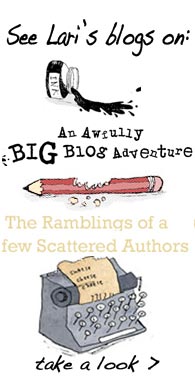
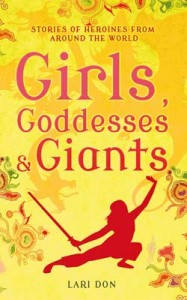
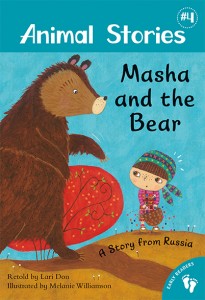
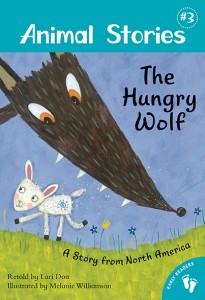
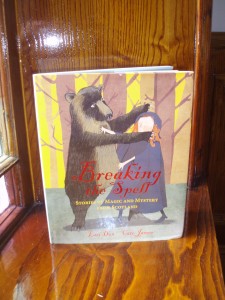
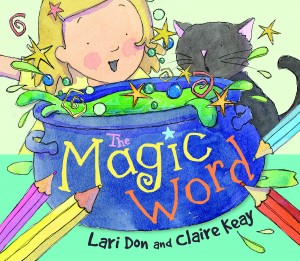
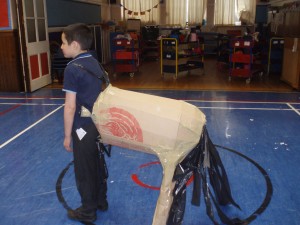
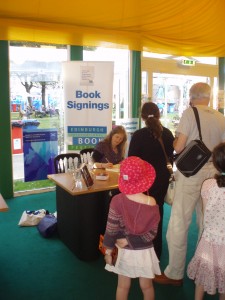
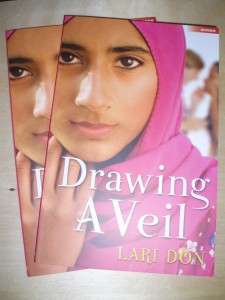
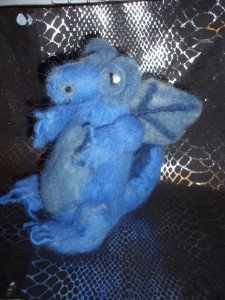
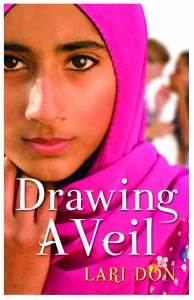
Recent Comments